Mint is an absolute classic in the herb bed. We present the best and most aromatic types of mint and show what makes them different from each other.
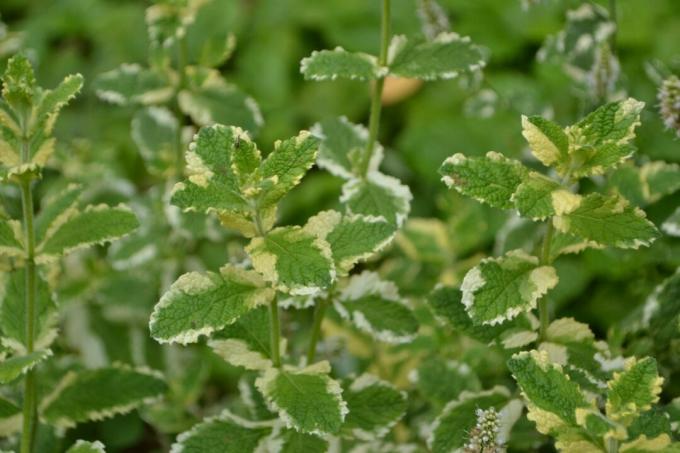
Everyone knows the peppermint. But have you ever heard of the pineapple mint or the chocolate mint? The genus of Mints (Mentha) comprises around 30 species and is therefore extremely diverse. So why not try a new type of mint in your own garden or on the windowsill? We give you an overview of the most exciting species.
contents
- The best types and varieties of mint
-
Classic types of mint
- Peppermint (Mentha x piperita)
- Spearmint (Mentha spicata syn. Mentha viridis)
- Water mint or brook mint (Mentha aquatica)
- Pennyroyal (Mentha pulegium)
- Mojito Mint (Mentha nemorosa)
-
Tea mint varieties
- Moroccan mint (Mentha spicata var. crispa Morocco)
- Nanaminze (Mentha spicata var. crispa ‘Nane’)
- English mint (Mentha × piperita ‘Mitcham’)
- Apple mint or round-leaved mint (Mentha suaveolens)
-
Wild mints
- Field mint (Mentha arvensis)
- Horse mint (Mentha longifolia)
- Corsican mint (Mentha requienii)
-
Mint varieties with a special aroma
- Lemon mint (Mentha gentilis var. citrata)
- Pineapple Mint (Mentha suaveolens variegata)
- Orange mint (Mentha piperita var. citrata ‘Orangina’)
- Chocolate mint (Mentha x piperita var. piperita ‘Chocolate’)
- Basil mint (Mentha × piperita var. citrata ‘Basil’)
- Strawberry Mint (Mentha species ‘Strawberry’)
- Banana mint (Mentha arvensis ‘Banana’)
- Similarities between the different types of mint
The best types and varieties of mint
Mints belong to the mint family (Lamiaceae) and are popular in herb beds or in pots on balconies, windowsills and patios. This is no wonder, because mints not only smell wonderful, they can also be creatively processed in the kitchen. The healing effect of mint has long been known and is said to help with gastrointestinal complaints, colds, headaches or muscle aches, for example.
In a verse by Walahfrid Strabo from the 9th In the 19th century it was said that if one wanted to name the many species and names of mint, one would have to list as many as there are fish in the sea. Although there are not quite that many, the mint genus is extensive and new varieties are always being bred.
The following is an overview of the classics of mint: mints, which are very suitable for tea, mints, which are mainly found in the wild, and more exotic types of mint with special flavors.
Classic types of mint
You have probably heard of the following five types of mint. You can't really go wrong with them - but it is still worthwhile to find out more about these well-tried species. Did you know, for example, that pennyroyal is poisonous?
Peppermint (Mentha x piperita)
the peppermint is the classic among the mint varieties and is often represented in gardens and on balconies. However, it is unclear where this type of mint originally came from. What is certain is that it is a cross between the brook mint (Mentha aquatica) and spearmint (Mentha spicata) acts. It is valued above all for its high menthol content and its peppery-spicy aroma. In cultivation it is undemanding, perennial and hardy.
An own Variety overview for peppermint can be found here in our special article.
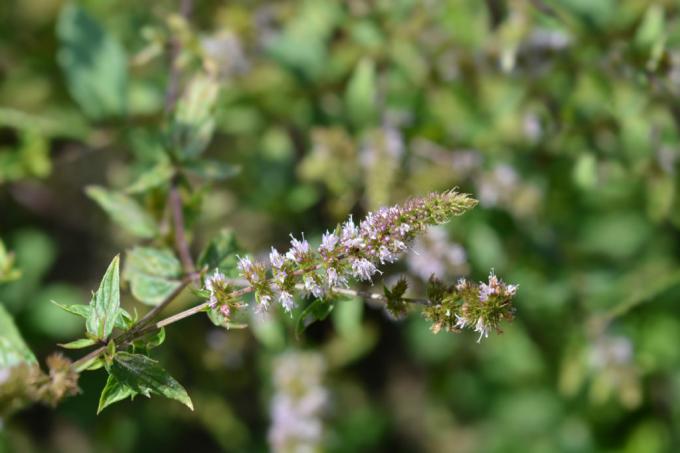
Green mint (Mentha spicata Syn. Mentha viridis)
Even if the name is not so common, spearmint is arguably the most widely used of the mint varieties. It is also called Krause Mint or Spear Mint (in English "spearmint"). It is this type of mint that gives toothpaste, chewing gum or sweets the minty taste. It originally comes from Europe, but is now also widespread in large parts of Asia and Africa. The spearmint is very vigorous and runners-forming. It can grow up to 130 cm high. Spearmint blooms white and purple from July to September.
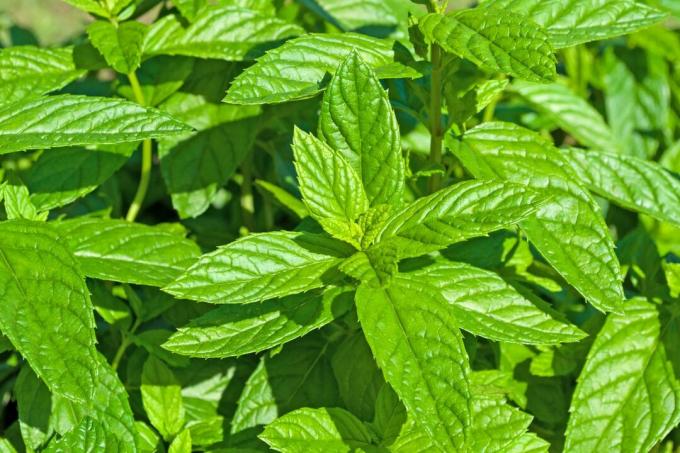
Water mint or brook mint (Mentha aquatica)
Both the name water mint and brook mint refer to the same type of mint: Mentha aquatica. It originates from Europe and can be found today in large parts of Africa and Europe. As the name suggests, this mint feels good in damp conditions. That is why they are mainly found in the wild on banks, ditches, moors or wet meadows. The peculiarity of the seeds of this type of mint is that they only spread through the water. The water mint is about 50 to 60 cm high, forms spherical, light purple inflorescences between July and August and is well suited for planting pond edges in the garden.
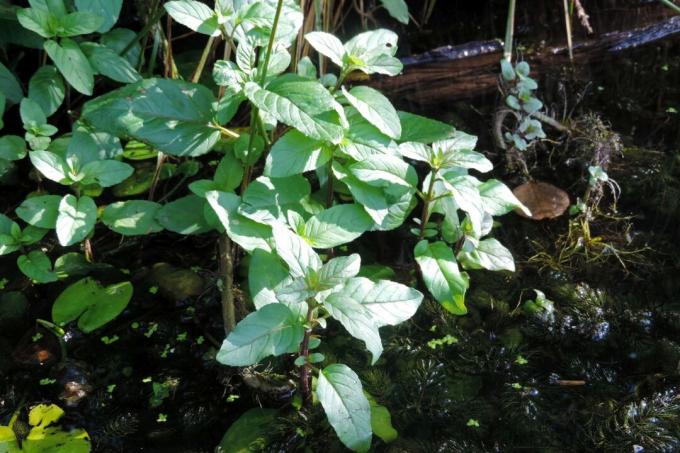
Pennyroyal (Mentha pulegium)
This type of mint can grow 10 to 50 cm high and has delicate purple flowers from May to September. The pennyroyal looks very similar to the peppermint. However, caution is advised as the pennyroyal is poisonous. While the stamens of the peppermint are just as long as the petals, the stamens of the pennyroyal protrude well beyond the tube-like, fused petals. In the past, pennyroyal was still used as a remedy, but today it is not used due to its toxicity. You should generally not pick pennyroyal as it is under nature protection and classified as endangered on the Red List. In the garden it is well suited for the fragrance bed.
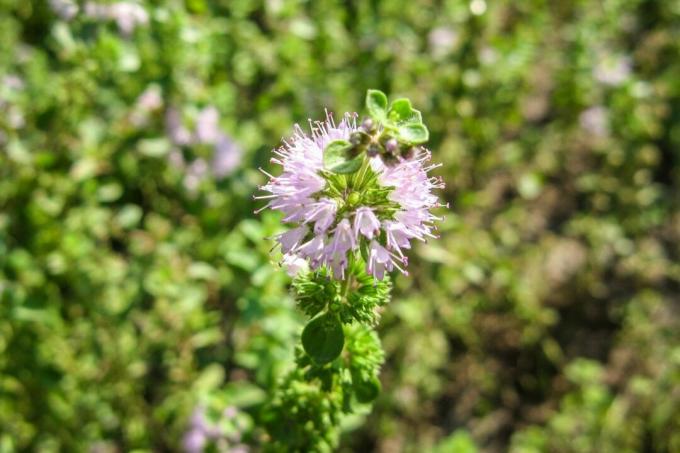
Mojito Mint (Menthanemorosa)
Mojito mint is also called Hemingway mint or cocktail mint. The reason is obvious: the aromatic herb is popular as Cocktail herb used for mixing refreshing cocktails and drinks such as mojito or hugo. She is probably from a cross of Mentha spicata and Mentha suaveolens emerged. The mojito mint grows between 40 and 80 cm high and is very vigorous. In summer, from the beginning of July to the end of August, it also flowers light purple and attracts numerous insects.
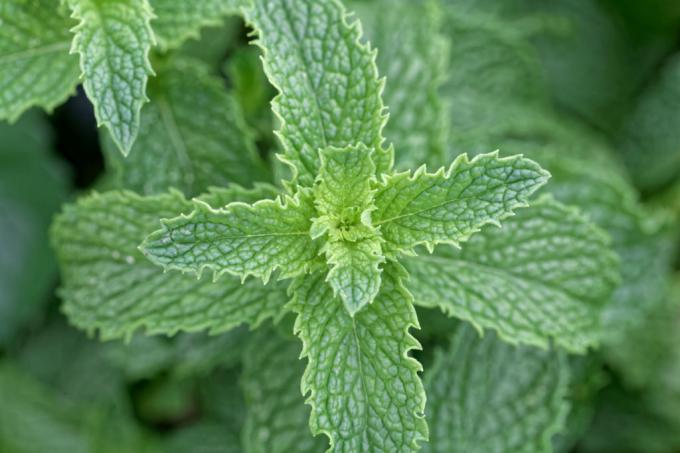
Tea mint varieties
The next four types of mint have a long tradition in countries where tea drinking plays an important role. So it's no wonder that these mints are all very suitable for making tea.
Moroccan mint (Mentha spicata var. crispa Morocco)
The Moroccan mint comes from North Africa. As the name suggests, it is very much appreciated in Morocco and drunk as a tea with a lot of sugar. But it's not just the cooling, refreshing taste that makes this type of mint so popular, but also its compact growth and easy care. The Moroccan mint grows to a height of 30 to 60 cm, the leaves are lanceolate and jagged at the edges. The flowers of the Moroccan mint are delicate purple.

Nano mint (Mentha spicata var. crispa ‘Nane’)
The name Nanaminze can actually refer to three types of mint: The types Mentha spicata var. crispa ‘Nane’ or Mentha x piperita var. piperita ‘Nana’ - and the Moroccan mint described above is sometimes called nano mint. The real nano mint is however Mentha spicata var. crispa ‘Nane’.
The nano mint is often also known as Turkish mint. Because there and in North Africa it is often drunk in combination with black tea and sugar. In these regions it is also often used to season oriental dishes. It can grow 30 to 60 cm high, is perennial and hardy. The flowers of the Turkish mint are white-pink and appear from July.
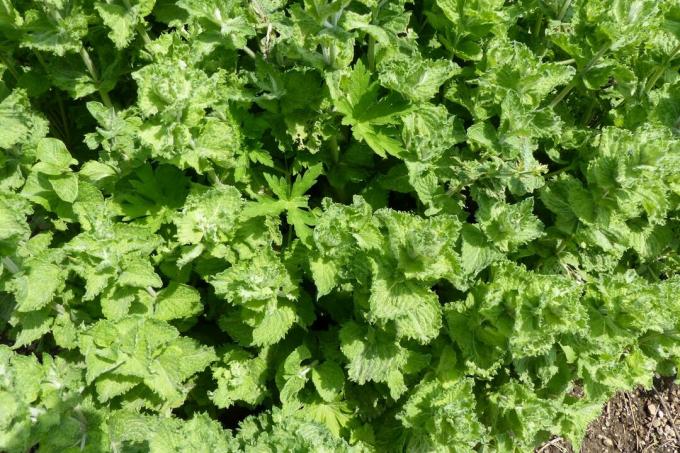
English mint (Mentha × piperita ‘Mitcham’)
The English mint is an old cultivated form from England from the Mitcham area. It is probably a coincidental cross between a garden mint and the wild water mint (Mentha aquatica). This type of mint is characterized by its intense taste with a lot of sharpness. It is therefore used for tea, soups and desserts. The leaves of English mint are green and tinge to red. The plants reach heights of up to 80 cm, are persistent and vigorous. The bloom appears between July and August.
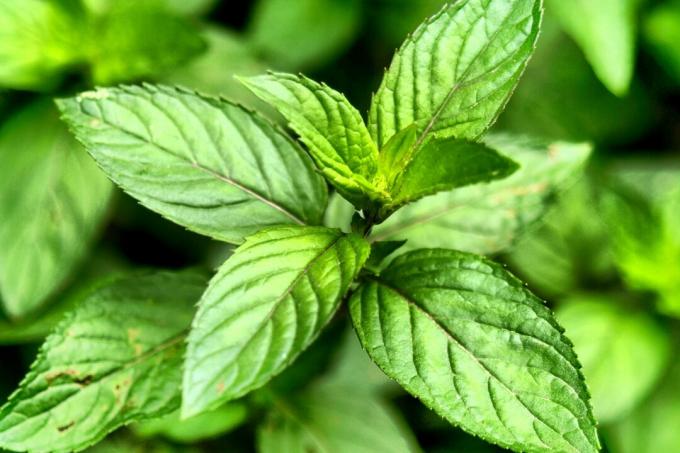
Apple mint or round-leaf mint (Mentha suaveolens)
Apple mint is also called round-leaved mint. This is due to their specially shaped leaves: these are oval. It's called apple mint because its leaves actually smell and taste like apple. Because of its mild aroma, apple mint is ideal for teas. Nowadays apple mint is widespread in large parts of China, Turkey, North Africa and Central Europe. The apple mint can grow up to 100 cm high and is extremely vigorous. It blooms in lilac in summer. It also loves it humid and can therefore often be found on wet meadows, wet roadsides or at ditches, but also tolerates drought better than many other types of mint.
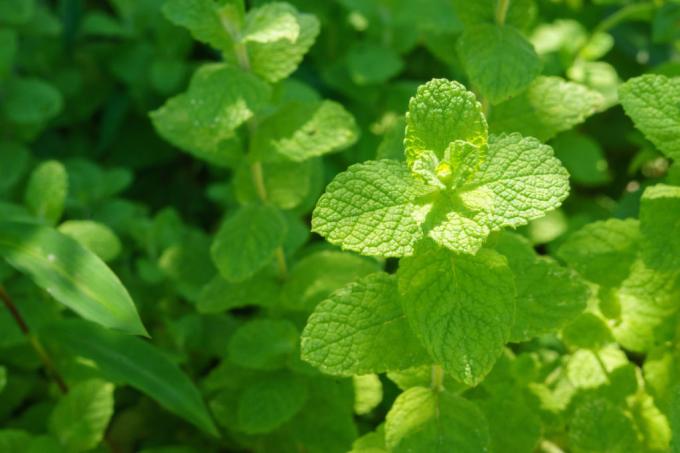
Wild mints
The following mints can all still be spotted in the wild in the field or along the way. Nevertheless, they can of course also be planted and cultivated in the garden or in pots.
Field mint (Mentha arvensis)
Field mint is also called corn mint and is a wild type of mint. It is common in all temperate regions in the northern hemisphere. The plant usually grows 5 to 30 cm tall and flowers pink to purple in color. It prefers moist and nutrient-rich locations and is less willing to grow than its cultivated siblings.
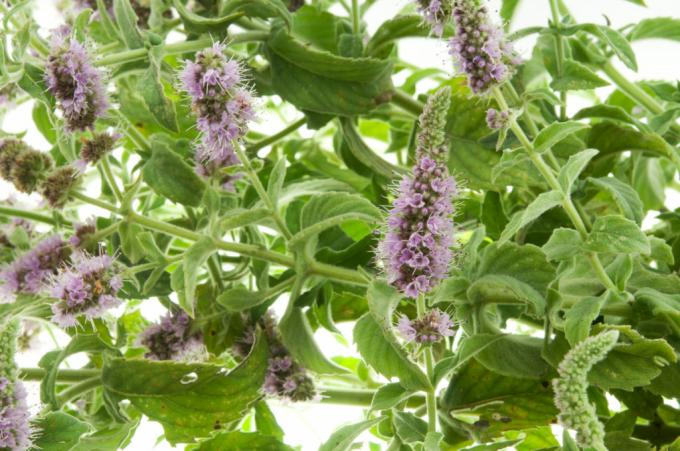
Horse mint (Mentha longifolia)
The native horse mint is also called forest mint and occurs from the temperate zones of Eurasia to southern Africa. In Central Europe they are often found in low mountain ranges and in the lower elevations of the Alps. It needs wet, nitrogen-rich soil in order to grow well. That is why they are often found near rivers or next to agricultural land. The long-leaved, fluffy hairy horse mint grows up to 130 cm high and bears pink to purple flowers between July and September.
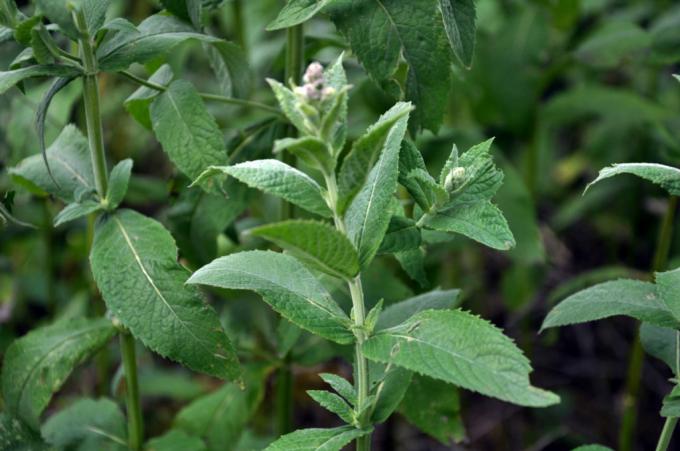
Corsican mint (Mentha requienii)
Corsican mint is also called tender mint and can only be found on three islands in the Mediterranean: on Corsica, of course, but also on Sardinia and Montecristo. The special thing about this type of mint is that it does not grow upright, but rather like a carpet. It forms lawns and gives off an intense, pungent odor. The crème de menthe liqueur is made from this mint. Due to its Mediterranean origin, the Corsican mint is not hardy and therefore needs protection in the cold season.

Mint varieties with a special aroma
The following seven types of mint all have one thing in common: They not only smell and taste like mint, but also have a completely different aroma.
Lemon mint (Menthagentilis var. citrata)
Another mint that got its name because of its aroma is lemon mint. Their leaves give off an intense citrus odor. It is therefore ideal for teas, lemonades, desserts or cocktails. The lemon mint can grow up to 40 cm high, is perennial and hardy.
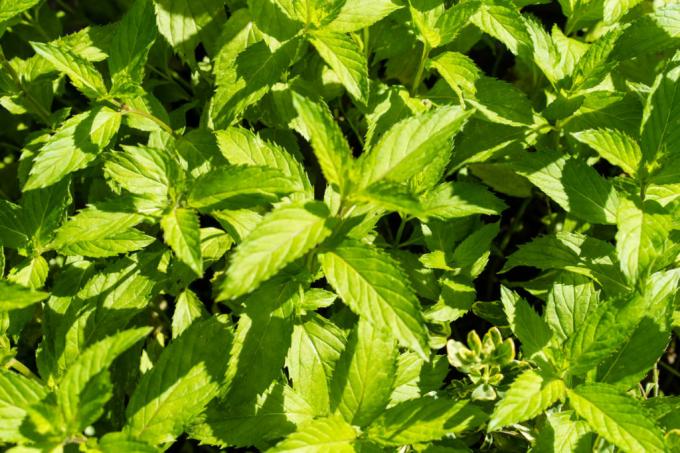
Pineapple mint (Mentha suaveolens variegata)
The leaves of the pineapple mint actually exude a slight pineapple aroma. It is therefore well suited for desserts, bowls or cocktails. The leaves of this type of mint are also striking: they are variegated green and cream-colored. Thus, the pineapple mint is a real eye-catcher in the bed or pot. However, it is not completely hardy in all areas and should therefore be overwintered indoors. With a height of around 25 to 60 cm, the pineapple mint is also not as vigorous as other types of mint.
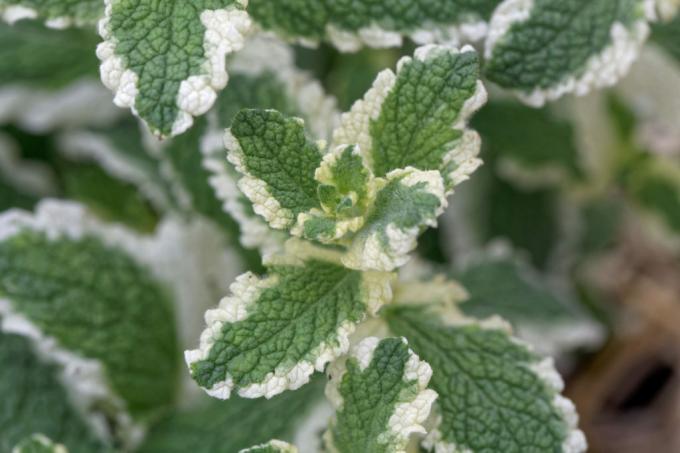
Orange mint (Mentha piperita var. citrata ‘Orangina’)
The orange mint also exudes an intense, fruity aroma that is reminiscent of bergamot or earl gray. It is therefore ideal for cooking, for example with sauces or vegetables. Orange mints grow 50 to 80 cm high and almost as wide. They develop purple flowers on dark red stems from July to September. Orange mints are very vigorous and spread quickly in the garden. The aroma of orange mint develops best in the sun, which is why it is also suitable as a container plant for sunny balconies.
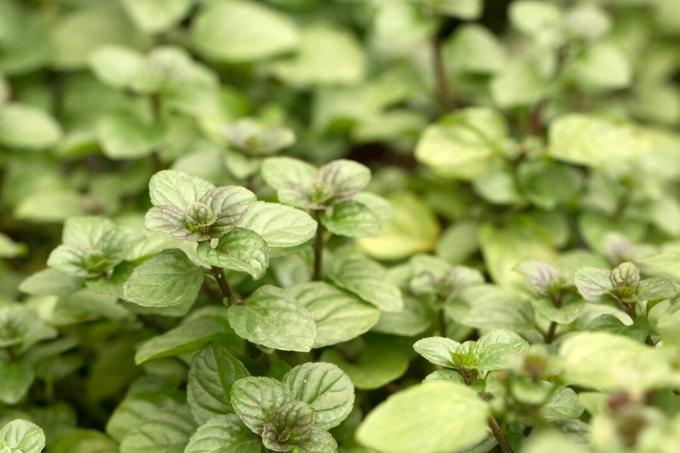
Chocolate mint (Mentha x piperita var. piperita ‘Chocolate’)
If you like mint chocolate or after eight, you will love this type of mint. It combines mint and chocolate aromas in one plant. However, the aroma is very fine, not so intense and is perceived differently by everyone. For one, the chocolate mint may smell and taste intensely like chocolate, while another may not even notice the smell. Chocolate mint plants reach heights of 40 to 60 cm and bloom light purple from July to September.
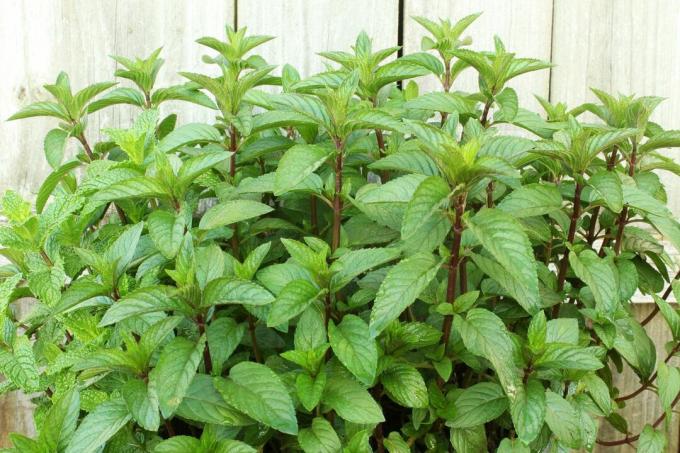
Basil mint (Mentha × piperita var. citrata 'Basil')
Another mint with a special aroma is the basil mint. The taste is very reminiscent of basil, the smell of Italian dishes. Italian is also the name Bastardo, as basil mint is also called. The scent and taste of the leaves are still very minty and also slightly peppery. The red stemmed mint is wonderfully suitable for salads, sauces and pestos. The basil mint is 40 to 70 cm high and can be up to 1 m wide.
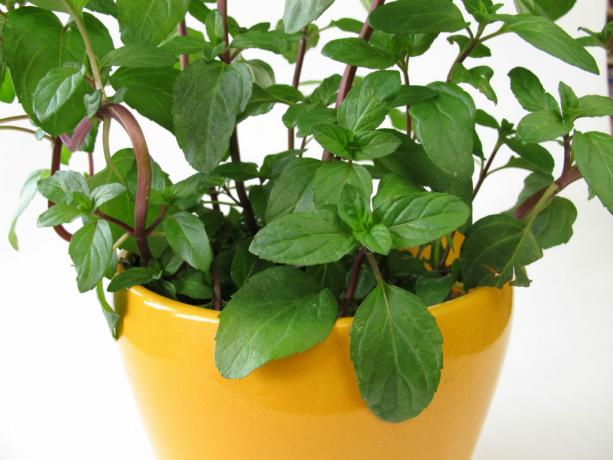
Strawberry mint (Mentha species 'Strawberry')
Another rarity among the mints: the strawberry mint. This actually tastes hardly of mint at all, but - you guessed it - of strawberries. It can be used well in the kitchen for teas, lemonades or cocktails. Strawberry mint plants are only 30 to 50 cm tall and bloom pink, but often spread heavily via runners.
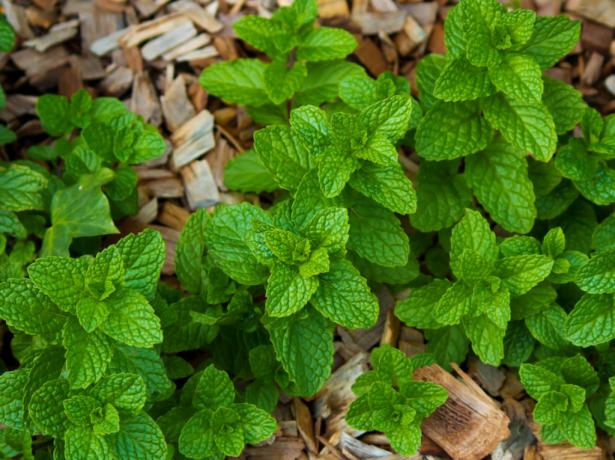
Banana mint (Mentha arvensis ‘Banana’)
A variation of the field mint (Mentha arvensis) is the banana mint. This was grown in France and the leaves actually give off an intense smell of bananas. In the kitchen you can experiment with the herb and use it for desserts or drinks. The plants of the banana mint are small, 30 to 50 cm high and do not spread excessively.
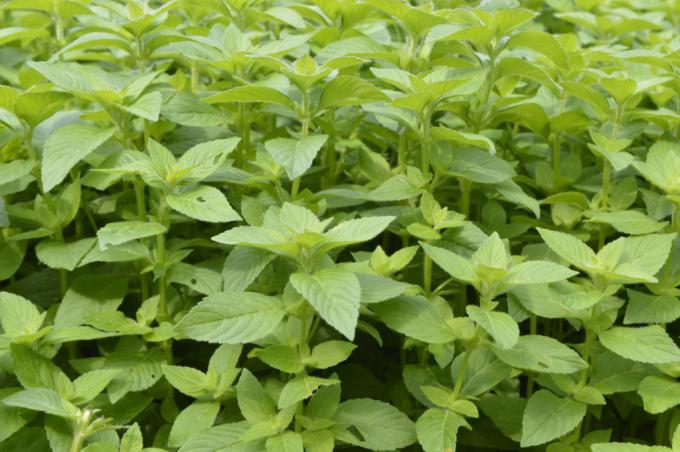
Similarities between the different types of mint
Even if there are over 30 types of mint with different properties and flavors, the different types have a lot in common: First of all, their appearance. Of course, the individual species and varieties differ in their appearance, but many mints look very similar. So you don't have to be an expert to spot a member of the mint genus. Determining the respective species is a lot more difficult. Almost all types of mint are also very vigorous and spread - mostly unintentionally - very quickly. Another thing they have in common is that mints are perennial plants. In addition, most of them (with a few exceptions) are hardy. All types of mint are also easy to care for and easy to grow, so that everyone can cultivate mint. The plants are also very similar in terms of their location requirements: almost all of them appreciate a partially shaded place with fresh, moist soil. Last but not least, all mints contain essential oils that give them their aroma.
What do the different types of mint have in common?
- Similar appearance
- Vigorous and runners-forming
- Perennial and hardy
- Easy-care
- Location requirements: partially shaded; fresh, moist soil
- Essential oils, especially menthol
Now, if you've decided on one or more varieties of mint to grow yourself, here are 10 that will help you Tips for growing mint.



